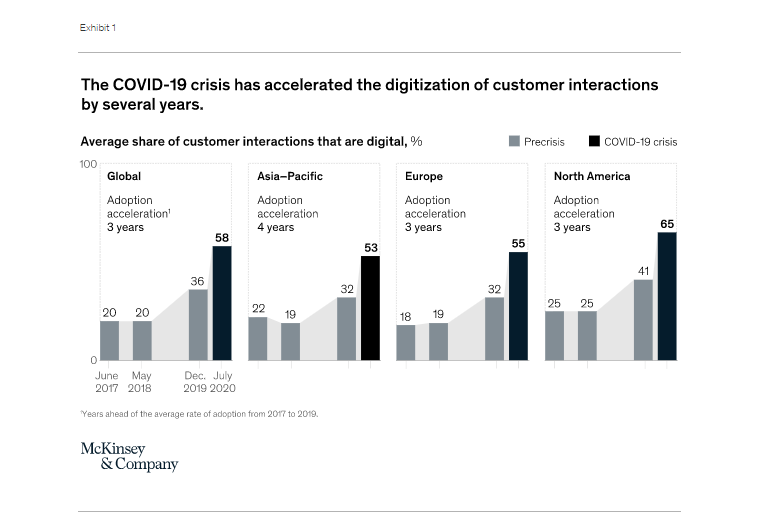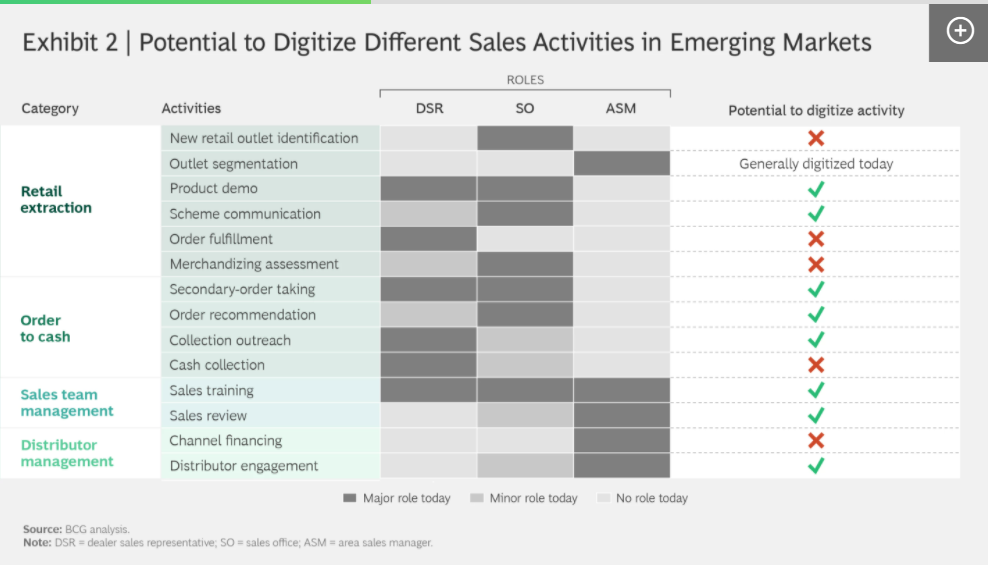2020 has been a pretty memorable year, an year no one will forget easily. It has made all of us look at the future in a different light. We are no longer chasing the high of progress without considering its consequences on the world. The standstill that coronavirus had put us on is something that has brought on the change. People have started thinking differently and businesses have started working differently.
Focusing on the business front, with industrial activity at an all time low during the pandemic, businesses had to reimagine their modus operandi. Their vision, their scope, their entire workflow had to be re-thought because of COVID. You couldn’t conduct business the old fashioned way. If you did, you would simply be signing your closure deed and no one wants that.
The pandemic and the coronavirus have given us a lot to think about, a lot to evaluate, examine and analyse. The question is where should we start? I am no expert in mental health and I can certainly never tell you how to live your life and what aspects of it you need to reimagine post-pandemic. However, I have a tad bit of knowledge of the business world and I would like to share it with you.
As it is often said that the business world is pretty dynamic and it keeps changing and you ought to reimagine yourself everytime it does. There hasn’t been a bigger change than the pandemic has brought along and its reimagination starts from the very heart of your business. So, let’s start from there.
The Business Re-analysis
Like I said above, if businesses wanted to survive coronavirus and its accompanying economic downturn, they had to re-analyse the way they did business. But how do they do that? How does a business change the ground it has stood on for years in a span of months?
It is possible by looking at the bigger picture, by focusing on the future and modifying yourself to align with the changing world. Business strategies in the pandemic need to be formulated in accordance to the ways the pandemic has turned. You can’t be hell bent in your own ways, you have to evolve and that evolvement would only come with a re-analysis.
Here are certain ways that will help you get to that point.
How do you define your business and its purpose?
Whenever a business is established, there is only one end goal and that is to earn profits. Every business owner has his sights set on it and there is nothing wrong in that. However, the means that achieve that target are essentially what define your business and its purpose.
When you are defining your business, you have to keep your customers at the forefront. You have to understand what they want, not what the market trend is. When you start addressing consumers’ pain points and consequently develop products that provide tangible solutions to those pains, you will be on the right track.
Alon with this, you have to be vocal about your goal and purpose. Running after money and not bothering about anything else is not going to cut it today. Whatever your purpose is, whatever you have promised your consumers, you would need to provide. Being vocal serves a purpose, but only if you are following through. If you say you are cruelty free, be 100% certain that you are because if not, the backlash would be too great to handle.
When COVID-19 put a stall on many business activities, there were many businesses that were and are still surfacing through. Now you know what the reason for the same is. So, start re-analysing.
How do you connect with your consumers?
Consumer interaction and engagement are an important part of consumer acquisition, which you may very well know is quite essential for any business. So, the way a business interacts with its consumers is key for its growth.
There are three moments that create the most vital forms of connections.
- The moment a consumer buys your product or service;
- The moment he or she actually experiences it;
- And finally the moment when he or she becomes its proponent on forums and other online channels.
All three of these need to be understood and made use of at all costs as part of the business strategy re-analysis in the pandemic.
Do you use data and analytics?
Consumer data is available in abundance and businesses are always ready and willing to use it. The reason is simple, you get insights into the minds of your target audience. With the pandemic, these insights have become all the more important. Therefore, using enhanced digital technologies to leverage consumer data is the need of the hour. Businesses are not only able to improve their user experience and agility with it, but are also saving a ton of money.
How do you create value?
Whatever the circumstances may be, a business has to be ready and willing to provide value to its customers and itself at the same time. Businesses in the pandemic need to keep this in mind when re-analysing their business model.
Take an illustration of a multinational company with a number of subsidiaries, cinema halls and grocery stores being amongst them. The pandemic forces one of these shit for a long time. So, how does the business keep creating value with the extra workforce that it has on its hands. The answer is easy enough, it shifts the entire focus on the business that has the potential of creating more value for the business and the customer alike. Cinema staff could be trained to become of value at the grocery stores. This would only happen when you start thinking about yourself and your customers.
How do you practice decision making and leadership?
The pandemic has entirely changed the way decisions are made by the management and employees alike. There is always a rush now that wasn’t present before COVID. You cannot wait for long and hefty discussions that would only end up being a waste of time and energy. The pandemic and its consequent crisis necessitate faster decision making and it has been seen amongst many top leaders of business. Frivolous decision-making does not even reach their ears.
Coming to leadership, being a leader and good one at that would always accompany the same qualities, however, in a crisis, they become even more important to stick to.
- Depending on your team and giving each member a chance to step up;
- Planning everything to the T and preparing for the best and the worst;
- Communicating what needs to be done and what has to be prioritised;
- And valuing personal ideas of all your employees and implementing them when necessary.
When you become a good leader, things would eventually start falling in line and you might be able to avoid the brunt of the crisis, who knows.
Are you valuing talent?
Consumers are considered vital for profits and growth alike. What if I were to tell you that there is someone more valuable to a business than its consumer? You might think this is a rhetorical question, but it isn’t. More than the consumers, a business’ employees are crucial, without them there won’t be any consumers.
So, when I said are you valuing talent, I meant the talent of your workforce. You cannot go letting people go in the pandemic. It may seem like the easiest way to lessen the load on the cashflow, but the lost talent would never be regained.
The pandemic has also made it possible for businesses to hire talent from across the world, without the need for taking on relocation costs. A middle-eastern company can hire someone from the UK and it would work quite effectively.
What about your office culture?
With the majority of the businesses still under the work-from-home norm, the re-analysis of work culture becomes key. How do you know that your employees would give out the same performance from the confines of their homes that they did at the workplace? The answer lies in the culture you instill for them.
Rather than ordering the employees around and shouting deadlines at them, if you take the route encouraging and supportive, you would automatically start experiencing a change in the work culture and etiquette of your employees. At the end of the day, it is your office ethos that needs to be adhered to, the way that is happening, should that even concern you?
It is often said ‘give respect and take it,' what is also true is that when you put your trust in your employees, there is a high likelihood that they are not going to break it. Try it for yourself.
Finally, how digitised are you?
OpenSense Labs shifted to remote working environments post-pandemic. One thing that COVID has done for sure is make people vary of going outside and contacting others. In the business world, this has led to the emergence of digitalisation at the level that was unprecedented before. Almost every continent and nation saw an increase in digitalisation throughout the various dimensions of businesses.
- Digitalisation is seen in various organisations’ offering of an increased amount of digital products. Of course sectors responsible for consumer goods and automotive and assembly could not completely move towards it.
- Digitalisation is seen in the most fundamental of business operations as well. From backend office proceedings to research and development, every core function of the business world took a step towards going digital.
- Finally, digitalisation also made an entrance in the way organisations interacted with their consumers. Look at the spike shown in the graph below to understand the notion even better.

The Industry-wide Re-evaluation
The COVID-19 has brought along an industry-wide havoc in terms of the profit pools companies had been basking in. Businesses have a certain hold over the numbers they would crunch in any given fiscal year, however, the pandemic has made those numbers look rather bleak to look at for many.
There was always a gap between the top players in the business market and the ones at the bottom. This bridge has only widened by the crisis we faced in 2020. If you just look at the numbers, you would get an idea of what exactly I am talking about. The December of 2018 and the 17 months after it saw the top quintile companies being rewarded with a profit of $335 billion, which is great for them. However, a lot of slightly equal proportions was born by companies at the bottom of the quintile. Do you see the massive bridge of revenue amongst these?
The COVID has indeed disrupted the business world. Yes, businesses had to rethink their strategies and their goals, but what if that alone wouldn’t be enough?
How have different business sectors fared during COVID? Not very well, I believe. There are six sectors that were hit the hardest by the global pandemic. Let us understand how they re-evaluated.
The automotive and automated industry
The auto industry was essentially drowning in 2020. The losses are said to be in billions. From driverless cars to automated factories, the sales of this sector were quite underwhelming. There is also this fact to consider that these issues were already prevalent before the pandemic hit.
In terms of re-evaluation, this sector and its makers are inclining themselves towards the online spectrum of the business world. To be more specific, it is the software-subscription that is gaining grounds. Features like heated seating or self-driving abilities in automotives can be taken up through the online purchase of the respective programmes.
The lenders and the borrowers
With unemployment rates at an all-time high and businesses earning less profits than losses, the pandemic was hard for the banking sector as well. The risk of bad debts was consequently higher.
To lessen the credit risk, a re-evaluated approach considered two major changes;
- One is to enforce automated underwriting for the retail sector and small businesses;
- And second is to implement a software to assess the credit score and consequent worthiness of a small business seeking a loan.
The foodies and the restaurateurs
People do not prefer to eat in restaurants, not as much as they used to before the pandemic. Who knows, who has sat on the table you are about to put your meal on, which you plan to gobble down as soon as it touches your tongue. So, indoor sitting has become a sort of taboo, even with half the occupancy.
The re-evaluation has pushed restaurateurs towards take-aways and deliveries. Drive-troughs are another great option. For this, the business owners have to clearly assess the pricing and the menu and make changes that would help them maintain a generous profit.
The insurers and the insured
The insurance sector did not really battle too many losses, however, it had to re-evaluate its products entirely for guaranteed survival. And that is exactly what it did.
Insurance technology and financial technology companies started launching products that were in sync with the pandemic and its needs. Capitalising on this need proved quite fruitful to a Chinese insurtec company, as it was able to provide for as many as 15 million people within a few months of the COVID crisis.
The insurance technology companies were also involved in mergers and acquisitions with the traditional insurance businesses.
The healthy and the healthcarers
The health sector was and is still the most active in battling the pandemic. Ever since COVID emerged, the health care workers have been on-duty.
Despite this fact, people still wanted more and that more was found in digital healthcare. Hospitals and ERs are indeed a scary place in the pandemic.
One of the examples of the digital healthcare can be found in the Apollo 24*7 application. An online doctor and pharmacy app developed by India’s Apollo Hospitals was such a success that believing the future of healthcare lies in the digital world would not be a wrong notion.

The educators and the educatees
Finally, it is the education sector that experienced drastic changes because of the pandemic. With a huge proportion of schools and colleges still being shut almost a year later, education, never for even a day, was affected. All thanks to the virtual world.
Remote learning became a concept that has slowly become the reality of students all over the world. Physical space is no longer needed and the virtual space is all that exists for the students.
No doubt there were immense challenges to overcome, inclusion and inequality being at the top of the list. It was the underdeveloped and developing countries and amongst those the lower-income students that suffered the most through remote learning. Many had to drop out because of lack of means.
If you look at all the re-evaluations properly, you will find one major similarity amongst the six sectors. And that is the fact that all of their solutions were virtual in nature. Businesses in the pandemic are going online and becoming more digital since that was the need of the hour in the present. Could the new business motto be ‘Go digital or go home?’ That is certainly a thought to consider thoroughly.
The Marketplace Re-examination
Let’s move forward with the selling strategy because at the end of the day, it is the sales that are going to bring in the revenue and keep the business up and running. Without the required number of sales, a business would most likely wind up.
The pandemic and its mandatory social distancing and the consequent lockdown had forced many businesses to close shop simply because they could not generate any revenue. Huge amounts of losses were incurred until finally the governments all over the world had to end the lockdown to stop the economy from going into a whirlwind.
So yes, generating sales and the correct marketplace strategy are the driving force of a business and the pandemic has mandated that we re-examine them.
Getting a grip on sales
Again going online and digitalisation seems to be the most prominent strategy to increase the sales figure amongst businesses. It is not just the ultimate sale that has to happen online, there are varying aspects of the selling process that need to be taken into consideration. If something can be shifted to the digital world, do it and do it now.
Of course, going digital serves a great purpose, however, there are a few areas where the digital approach may not work. The below given illustration would give you a clear explanation of what I am talking about.

Working through the distribution
The process of distribution is pretty vital for your sales. It is through these distributors that your products end up with the retailers and finally to the consumers. So, choosing the right one and adhering to them is of the essence.
Services that are inclusive of breaking bulk, secondary execution, retailer credit, collections along with compliance are an important part of the distributor’s job profile.
With no clear sight as to when the pandemic would end, you have to re-examine your choices and know whether the payout structures are suitable for you or do you need to rope in the performance evaluators to get the best service out of them?
Taking command of trade spending
Increasing the demand for your products is what will bring in the numbers and it is done through the trade investments. You need to prioritise them. One way to do that is by investing throughout stock keeping units, through this you will be able to examine the affordability, brand strength, market share as well as the level of competition based on the location you are at.
Keep a track of these spendings, aim for effectiveness and eliminate any wastage or leaks that you may find. Remember your product's visibility depends on these.
Capitalising on the e-commerce
I feel like I am reiterating myself for the hundredth time, but please bear with me once more. The nature of the COVID-19 has mandated a significant rise in businesses transitioning towards e-commerce.
Products that were never sold online and being home delivered, like building supplies. Facebook’s marketplace allows you to buy stuff without any physical contact with the seller (he would keep the sold item in his front yard and you simply pick it up). Amazon deliveries were ongoing throughout a major part of the lockdown. So, if your re-examination of the market place and sales hasn’t pointed you towards this side, you might have to re-re-examine.
The Workplace Reassessment
Now that we have discussed everything from businesses to business strategies in the pandemic and the position of separate sectors and the marketplace, there is only one thing left to discuss and that is the assessment of the workplace.
Work from home or remote working has indeed become a norm equivalent to social distancing. So, how do you, as a business owner or employee, reassess the value provided by the same? Is your workplace going to be just a waste of space? I believe not and here is why.
What to do with the extra space?
Remote working has made it seem like the office space is too large and unnecessary, but is it so? Working from home may be the norm now, but it would certainly not be in the coming year. So parting with the existing real estate should not be an option, because there is no extra space.
Many companies are following this same notion. They have started asking some of the employees to come to the office and the additional space is just the kind of social distancing needed.
Moreover, with office meetings and gatherings, the pandemic necessitates more space not less. For instance, bigger conference rooms are one step towards the workplace reassessment in the pandemic.
Do you need to reassess functionality?
The workspace and all that it encompasses in terms of design and layout had to be changed with COVID. Yes, offices are essential for branding and identity, but they would never trump safety.
An illustration can be found in the new designs themself. With the pandemic and the need for sanitation, offices have started building themselves in such a way that the sanitation process eases. Open spaces and hands-free fixtures and materials have gained popularity; self-opening doors being one of them.
Would technology be involved somehow?
Technology is integral when the workflow is considered in the pandemic. Remote working is dependent on it. Many would assume that the work from home culture has somehow deteriorated the work ethos and resulted in lacklustre performance from the employees and non-existent communication. But that isn’t the case at all.
Today our homes have become our workplace and technology has helped us reassess it. If I talk about my workplace, it is my living room, but there is a similar level of communication and workflow as it was in the pre-coronavirus days. Daily video calls, instant messaging and emails and the constant updates of work have made the transition of work from the office to our homes pretty streamlined.
So, reassess whether you are able to streamline the same for your staff as well. If you feel the need, which you very well would, technology upgrades would help you in enhancing your management skills. The development of a VPN has helped many organisations in bettering their data interactions with the employees. Offices have also been built with high grade conference rooms to aid the employees working remotely even better.
How do leases and costs come into the equation?
For the landlords, the ultimate goal would be to get that monthly cheque from the tenant. That is his business model after all. It is the tenant that has to work around the rent. With remote working the need for space has lessened by a substantial amount.
So, subletting can be one solution to that hefty rent cheque. However, with that comes the issue of more people using the same space, restrooms, meeting rooms and pantries being amongst these. This, then mandates facilities like sanitisation and air filtration systems.
At present, the cost per square foot is nowhere near its pinnacle. So, if saving is an option in your lease agreement and your landlord has no objection, go for it. Your workplace should be put to good use.
The Bottom Line
The pandemic is more or less a social crisis that has led to the emergence of a new agenda, for people and businesses. Companies have had to wind up their business because the model they were working on was not sustainable. And that is what businesses in the pandemic have learnt, to become sustainable.
Businesses that are agile and adaptable were able to reimagine themselves, their business, their industry, marketplace and workplace and all of this reimagination made it possible for them to keep standing almost a year later to the day the pandemic was declared.
Subscribe
Related Blogs
Trek n Tech Annual Retreat 2025: A 7-Day Workcation of OSL

OSL family came together for the Trek n Tech Annual Retreat 2025, a 7-day workcation set amidst the serene beauty of…
Exploring Drupal's Single Directory Components: A Game-Changer for Developers

Web development thrives on efficiency and organisation, and Drupal, our favourite CMS, is here to amp that up with its…
7 Quick Steps to Create API Documentation Using Postman

If you work with API , you are likely already familiar with Postman, the beloved REST Client trusted by countless…




